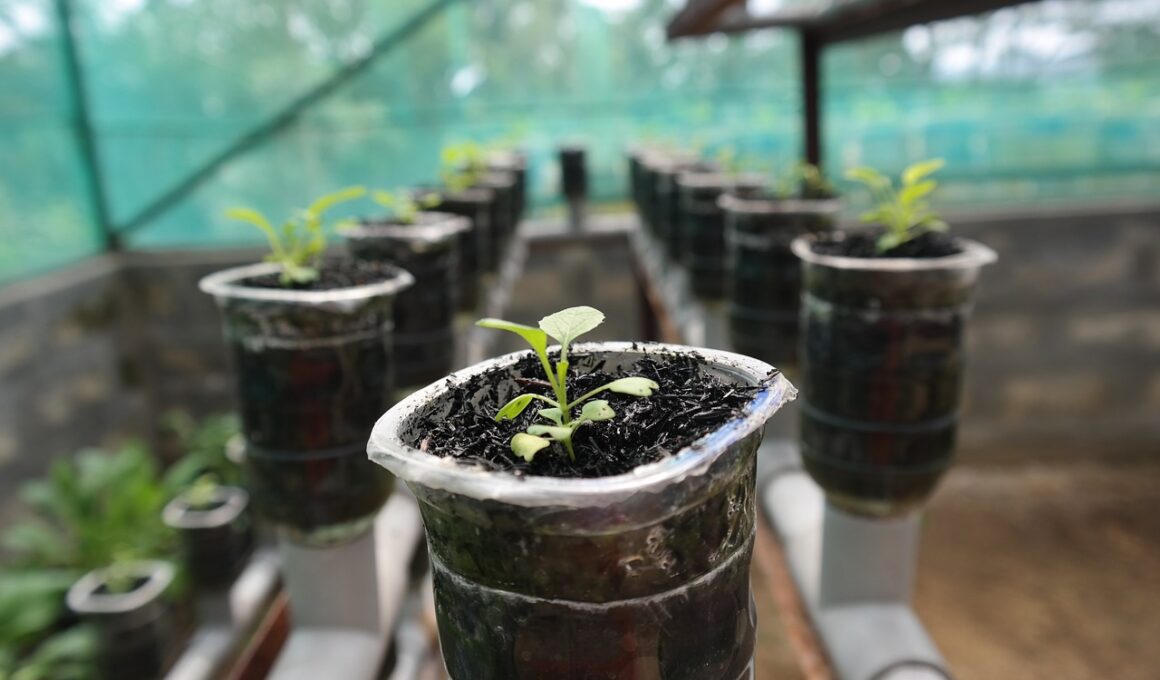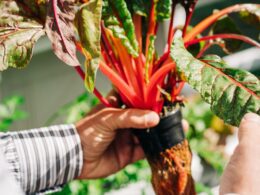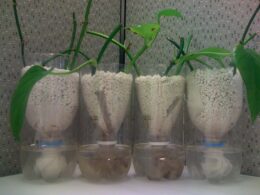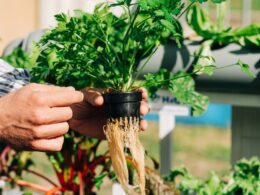Are you someone who loves to grow plants but is unsure which method is better between hydroponic and soil cultivation? Well, you’re in the right place.
In this article, we will explore the advantages and disadvantages of both methods and compare them to help you make an informed decision.
Growing plants can be a fulfilling and rewarding experience, but it can also be challenging. Choosing the right cultivation method is crucial to the success of your plants.
Hydroponic and soil cultivation are two popular methods that have their own unique benefits and drawbacks. By understanding the differences between these methods, you can choose the best one for your needs and ensure the health and growth of your plants.
So, sit back, relax, and let’s dive into the world of hydroponic and soil cultivation.
Introduction to Hydroponic and Soil Cultivation Methods
You’re probably used to seeing plants growing in dirt, but have you ever considered growing them without soil, using a water and nutrient solution instead? This method is called hydroponic cultivation and it has been gaining popularity due to its many benefits.
In hydroponic farming, plants are grown in a controlled environment where they receive the exact amount of nutrients they need to thrive. One of the advantages of hydroponic farming is that it allows for vertical farming. This means that you can grow more plants in a smaller space, making it ideal for urban areas where space is limited. Additionally, hydroponic farming doesn’t require the use of pesticides or herbicides, making it an organic form of cultivation. This is especially important for those who are health-conscious and want to avoid consuming foods with harmful chemicals.
On the other hand, traditional soil farming has its own benefits. Soil contains natural microorganisms that are beneficial for plant growth. Furthermore, soil farming allows for a wider range of crops to be grown, as some plants prefer specific types of soil. However, the downside is that soil farming requires a lot of space, and it can be difficult to control the amount of nutrients and water that each plant receives.
In conclusion, both hydroponic and soil farming have their own advantages and disadvantages. It ultimately comes down to personal preference and the specific needs of the crops being grown. Whether you choose to go the organic or non-organic route, both methods have the potential to yield healthy and delicious produce.
Advantages and Disadvantages of Hydroponic Cultivation
If you’re considering hydroponic cultivation, you’ll want to know its advantages and disadvantages. One advantage is precise control over the plant environment, which promotes optimal growth.
Another advantage is efficient water usage, making hydroponics more sustainable than traditional soil cultivation.
Finally, hydroponics reduces the risk of pests and diseases, making it a cleaner and safer option for your plants.
Adjusting the paragraph structure in the input to logically group complete sentences on their own lines makes it easier to read and understand.
Precise Control over Plant Environment
Achieving precise control over the plant environment is a key advantage of utilizing alternative growing methods such as hydroponics. Automated systems and nutrient delivery allow for precise control over factors such as water, pH levels, and nutrients. This level of control means that plants can grow faster and healthier, leading to higher yields and better quality produce.
In addition, hydroponic systems allow for the control of light and temperature, creating an ideal environment for plants to grow. This means that crops can be grown year-round, regardless of the season or weather conditions outside.
With precise control over the plant environment, hydroponic cultivation offers a level of predictability and consistency that traditional soil-based methods simply can’t match.
Efficient Water Usage
Controlling water usage efficiently is a significant advantage of utilizing hydroponic growing methods. With automated systems, you can have precise control over water levels and prevent wastage.
In hydroponic systems, the water is recirculated, and any excess water is collected and reused. This helps conserve water, making it a more sustainable option for agriculture. Compared to traditional soil-based farming, hydroponic systems use up to 90% less water.
This is because the water is delivered directly to the plant roots, and there is no water lost to evaporation or runoff. Additionally, hydroponic systems can be designed to collect and reuse rainwater, further reducing the amount of water needed.
Overall, hydroponic systems provide an efficient and sustainable way to grow crops while conserving water resources.
Reduced Risk of Pests and Diseases
By reducing the need for soil and utilizing controlled environments, hydroponic systems offer a lower risk of pests and diseases. With hydroponics, you don’t need to worry about soil-borne pests or diseases that can quickly spread and contaminate your plants.
Additionally, you can employ natural pest control methods such as introducing beneficial insects or using organic farming techniques to keep your plants healthy. In hydroponics, you can also control the temperature, humidity, and light levels, which can help prevent the growth of harmful bacteria and fungi.
This means that you can avoid using harmful pesticides and fungicides, making your plants more sustainable and environmentally friendly. With hydroponics, you can grow healthy, pesticide-free plants that are safe for you and your family to consume.
Advantages and Disadvantages of Soil Cultivation
Though soil cultivation has been practiced for thousands of years, it comes with some drawbacks. Soil erosion occurs when the top layer of soil is removed due to wind or water, which can lead to decreased soil fertility and reduced crop yields. Nutrient depletion happens when crops absorb the nutrients in the soil faster than they can be replenished, resulting in soil that is deficient in essential nutrients.
Despite these drawbacks, soil cultivation has some advantages over hydroponics. Soil contains a variety of beneficial microorganisms that help plants grow, and it can also provide some natural pest control by encouraging beneficial insects. Additionally, soil-grown crops tend to have a more complex flavor profile due to the presence of trace minerals and other organic compounds that are not found in hydroponically grown crops.
However, soil cultivation also has some disadvantages. It can be more difficult to maintain consistent growing conditions in soil, since factors such as temperature and humidity can vary more widely than in a controlled hydroponic environment. Soil also requires more water than hydroponics, as water can evaporate from the soil and plants are not able to absorb all of the water in the soil.
Overall, both soil cultivation and hydroponics have their advantages and disadvantages, and the choice between the two will depend on factors such as the type of crop being grown, available resources, and environmental impact.
Do Hydroponically Grown Strawberries Taste Better Than Soil-Grown Strawberries?
When comparing hydroponically grown strawberries to soil-grown strawberries, the hydroponic strawberry taste quality often comes out on top. The controlled nutrient solutions in hydroponic systems contribute to sweeter and juicier strawberries, while avoiding soil-borne diseases. These factors enhance the overall flavor and freshness of hydroponically grown strawberries.
Comparison of Hydroponic and Soil Cultivation
If you’ve been following along, you now know the advantages and disadvantages of soil cultivation. But have you ever heard of hydroponic cultivation? It’s a method of growing plants without soil, using only water and nutrients.
In this subtopic, we’ll compare hydroponic and soil cultivation and help you decide which one is better.
When it comes to nutrient absorption, hydroponic cultivation has the upper hand. Because the plants are grown in a nutrient-rich solution, they’re able to absorb nutrients more efficiently than plants grown in soil. This leads to faster and healthier growth rates. Additionally, hydroponic systems use less water than soil cultivation, making them more sustainable.
However, the cost comparison between hydroponic and soil cultivation can be a deciding factor for some. Hydroponic systems can be more expensive to set up and maintain than traditional soil methods. Additionally, there’s a learning curve to hydroponic cultivation, which can make it a bit more challenging for beginners.
Despite these challenges, many growers find that the benefits of hydroponic cultivation outweigh the costs.
Conclusion and Recommendations for Growing Plants
Now that you’ve weighed the pros and cons of both cultivation methods, it’s time to make a decision on how you want to grow your plants.
If you’re looking for a more precise and controlled environment, hydroponic cultivation might be the better option for you. Hydroponics is a soil-less method that allows you to control the nutrients and pH levels your plants receive. This means your plants will get exactly what they need to thrive and grow.
On the other hand, if you’re looking for a more traditional approach, soil cultivation might be the better choice. Soil provides a natural environment for your plants and is much easier to set up and maintain. Plus, it’s a more cost-effective option as you don’t need to invest in specialized equipment like grow lights or hydroponic systems.
No matter which method you choose, it’s important to consider plant nutrition and grow light options. Plants need a balance of nutrients like nitrogen, phosphorus, and potassium, as well as micronutrients like calcium and magnesium. Grow lights are also essential for indoor cultivation, providing the necessary light spectrum for photosynthesis. Consider LED grow lights for their energy efficiency and customizable light spectrum.
Remember, the choice between hydroponic and soil cultivation ultimately depends on your personal preference and goals. Consider your budget, time commitment, and the type of plants you want to grow before making a decision.
Happy growing!
Frequently Asked Questions
How much does it cost to set up a hydroponic system compared to traditional soil farming?
When it comes to cost comparison, setting up a hydroponic system can be more expensive than traditional soil farming. However, the efficiency benefits of hydroponics can make up for the initial investment.
With hydroponics, you can grow more plants in a smaller space, using less water and nutrients. This means lower costs in the long run and higher yields.
Plus, hydroponics eliminates the need for pesticides and herbicides, making it a safer option for you and the environment.
So while the initial cost of setting up a hydroponic system may be higher, the efficiency benefits make it a wise investment in the long run.
Can hydroponic systems be used for all types of plants or are there limitations?
When it comes to hydroponic systems, there are some limitations to what types of plants can be grown. While they work well for leafy greens like lettuce and herbs, plants that require a lot of space to grow, like pumpkins or watermelons, may not thrive in this environment.
Additionally, some plants may require the beneficial microorganisms found in soil to grow optimally. This is why soil is still the preferred option for many farmers when it comes to certain crops. However, hydroponic systems do have their benefits, such as the ability to grow plants faster and with less water.
Ultimately, it depends on what types of plants you want to grow and what your goals are for your farming operation.
Are hydroponically grown plants more nutritious than soil grown plants?
When it comes to the nutritional value of plants, hydroponically grown plants have been found to have higher levels of certain nutrients compared to soil grown plants. This is because hydroponic systems allow for precise control over the nutrient levels and pH balance of the water, ensuring that plants receive the optimal amount of nutrients.
Additionally, hydroponic systems have higher yield efficiency, meaning that they produce more plants per square foot compared to soil. So, if you’re looking for a way to grow nutrient-rich plants with minimal space and resources, hydroponic systems are definitely worth considering.
What is the environmental impact of hydroponic farming compared to soil farming?
When it comes to environmental sustainability, hydroponic farming has some advantages over soil farming. For one, it uses up to 90% less water than traditional farming methods. This is because hydroponics recirculate water, meaning that it doesn’t get lost to evaporation or runoff.
Additionally, hydroponic farming eliminates the need for harmful pesticides and herbicides, making it a safer option for both the environment and our health. Although soil farming has its own benefits, such as supporting a diverse ecosystem and providing natural nutrients to plants, hydroponic farming offers a more sustainable solution to feeding a growing population while minimizing water usage and harmful chemical runoff.
How do hydroponic and soil grown plants differ in taste and texture?
When it comes to taste and texture, there are subtle differences between hydroponic and soil grown plants.
Hydroponic plants tend to have a milder taste and softer texture, while soil grown plants have a stronger, richer flavor and firmer texture. This is because hydroponic plants absorb nutrients directly from the water, which can impact their flavor profile.
Soil grown plants, on the other hand, absorb nutrients from the soil, which can result in a more complex and varied flavor. Additionally, the appearance of hydroponic plants may be more uniform, but this doesn’t necessarily mean they are healthier or more nutritious.
Ultimately, the choice between hydroponic and soil grown plants comes down to personal preference and the specific needs of the individual plant.
Conclusion
In conclusion, you now have a better understanding of hydroponic and soil cultivation methods, as well as their respective advantages and disadvantages.
While hydroponic cultivation offers faster growth rates, higher yields, and more precise nutrient delivery, it requires significant upfront investment and technical knowledge.
On the other hand, soil cultivation is more accessible and affordable, but can be limited by soil quality and drainage issues.
Ultimately, the choice between hydroponic and soil cultivation depends on your specific goals, resources, and preferences. Whether you choose to grow your plants in nutrient-rich water or nutrient-rich soil, make sure to do your research and experiment to find the best method for you.









